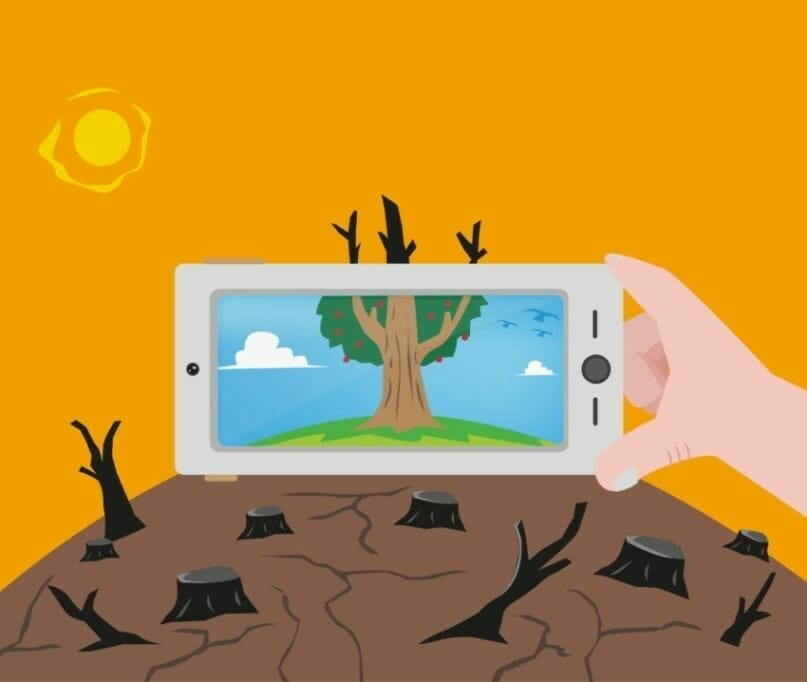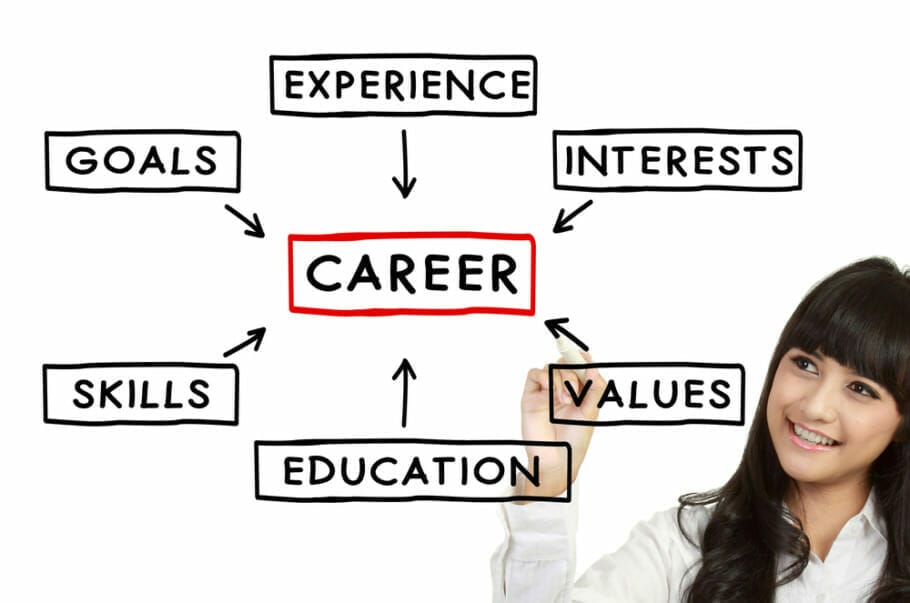Your shopping cart is currently empty!
For their successful, good life Information you really need: Government-funded publisher, awarded the Global Business Award as Publisher of the Year: Books, Magazine, eCourses, data-driven AI-Services. Print and online publications as well as the latest technology go hand in hand - with over 20 years of experience, partners like this Federal Ministry of Education, customers like Samsung, DELL, Telekom or universities. behind it Simone Janson, German Top 10 blogger, referenced in ARD, FAZ, ZEIT, WELT, Wikipedia.
Disclosure & copyrights: Here you will find the hand-picked book recommendations in cooperation with our partner Managementbuch.de on the topics of economics, business and non-fiction. The reviewers are Stephan Lamprecht, Christiane furrier, Wolfgang Hanfstein & Oliver Ibelshäuser. The books were made available free of charge by the publisher, image rights from the publisher.
The 5 Best Books on Brain Research in Business, Leadership & Marketing {Reading Tip}
By Simone Janson (More) • Stephen Lamprecht (More) • Last updated on October 27.10.2019, XNUMX • First published on 27.10.2019/XNUMX/XNUMX • So far 4107 readers, 1749 social media shares Likes & Reviews (5 / 5) • Read & write comments
How does our Brain? The question is far from being fully resolved, but also for Companys interesting who want to know how to get the best Executives and Employees find and customers enthusiastic about their products. 5 books at a glance.
- How coaches use the results of brain research
- From learning types and haptics to e-learning
- Current perspectives of research
- Digital methods of further education: how does proper learning work
- Neuroscience for managers
- Step-by-step framework for fine-tuning brain functions
- Neurosciences in Marketing
- Guide with business cases and scientific background
- Do not sell rotten eggs: creative marketing strategies for the practice
- USP theory is one thing, practice is another
- The opera singer effect: convince your audience
- 7 traps of life: Be happy with changes in thinking
- Falling as challenges
- Make a big difference with small changes
- Storytelling about changing thinking
- Top books on the subject
- Read text as PDF
- Advice on success, goal achievement or marketing
- Book eCourse on Demand
- Skate eBook as desired
How coaches use the results of brain research
How does our brain work? The question of how we think and learn has occupied science for well over a century. And the secret isn't quite out yet. But brain research keeps coming up with astonishing results. Whether it's the proverbial "Things to Learn during sleep” or how biochemical processes that are considered happiness hormones work is explained.
Interdisciplinary brain research naturally inspires the further education sector. Trainers and coaches must ensure that not only the right regions of the brain, but all of the senses are addressed. After all, everyone in the Further Training works that mediated Background is permanently anchored in the learners.
From learning types and haptics to e-learning
As the editor, Hanspeter Reiter is not interested in creating an encyclopedia of brain research, but in creating connections and linking different perspectives and topics. In their contributions, 24 experts present the current state of research and findings from practical application in the field Further Training. The topics presented are correspondingly diverse.
For example, what does brain research say about different types of learning? Are these or are they rather excuses of the participants? Such questions are just as important as the presentation of different approaches to brain-oriented learning. Without a doubt, practical experience and comprehension have a great influence on the learning success. And so coaches are interested in how feel is incorporated into individual lessons.
Current perspectives of research
Objective of a further training measure, it must be that the knowledge imparted migrates into the long-term memory in order to be Everyday life to be available. The way there is via emotions and the right one Motivation for learning. However, one essay mentions the stumbling blocks on the way there. The editor has succeeded in preserving the individuality of the individual contributions, which makes reading exciting.
The work is aimed at readers who are interested in science, not just scientists themselves. The authors provide in their contributions abundant sources and references that allow a deeper introduction to the different aspects.
Discounts for your success (advertising)!
Digital methods of further education: how does proper learning work
The handbook is very up-to-date when it is digital Methods dealt with in further education. Behind this is the question of whether people can “digitally” at all. For example, long-term studies underscore the Significance of handwriting for memory. Typing is something different than training the motor processes in your brain that are necessary when writing by hand. What effects does this have on the digital training offers in companies, which are now often particularly praised? The discussion of this Ask forms the worthy conclusion of a very readable anthology.
Anyone who is interested in the subject of brain-oriented learning and wants to find out about the current state of research and practical applications will find in this book a comprehensive and inspiring source of information.
Neuroscience for managers
The Greek authors Nikolaos Dimitriadis and Alexandros Psychogios take a slightly different approach in their book “Neuroscience for Leaders: A Brain Adaptive Leadership Approach”.
They relate the topic of brain research directly to the topic Business-Everyday. Modern science has shown that in order to behave more productively in complex business situations, we need to understand and transform the inner workings of our brain. With the latest findings from applied neuroscience, behavioral economics and Psychology Neuroscience for Leaders shows how to become a better leader through brain-based learning.
Step-by-step framework for fine-tuning brain functions
Nikolaos Dimitriadis and Alexandros Psychogios provide a step-by-step framework for fine-tuning brain function in four key areas: improving the thinking process, understanding and promoting emotions, designing automated brain responses, and developing dynamic relationships. They explain the underlying science behind these steps, why they are important to the business environment, and how they can be improved.
With case studies, self-Assessmenttools and useful exercises, Neuroscience for Leaders is a valuable guide for managers and leaders who want to improve the effectiveness of their leaders. A great book with many additional sources that invite you to delve deeper into the subject. The neurosciences are therefore also an important aspect in personnel selection, where neuroscience methods may soon make common psychological approaches to aptitude diagnostics obsolete.
Neurosciences in Marketing
Nikolaos Dimitriadis, who runs a neuro-Marketing and neuroHR maintains, sees marketing in particular as facing unprecedented challenges: a changing media landscape, an increasingly complex customer journey, innovative technologies, start-ups that are breaking through traditional channels, and a new generation of tech-savvy customers. How should marketers adapt to this changing landscape and fill the skill gap that many of today's marketers face?
With his follow-up book “Advanced Marketing Management” Dimitradis introduces this new Welt of marketing in detail. The message: since traditional marketing approaches are not convincing Solutions for modern business realities, a new approach is urgently needed if marketers are to regain trust in their businesses. It's all about marketing, not how the brain works.
Guide with business cases and scientific background
With contemporary examples, business case studies and supporting pedagogy, Advanced Marketing Management first leads the discussion about traditional marketing methods and a critical discussion. Be it because the book is also intended as a textbook for students - the author is also the regional director of the University of Sheffield International Faculty, CITY College, for the Western Balkans - this aspect takes up too much space and looks as if the knowledge of the Neuromarketings are defended against traditional methods.
This book a great one selection of literature and academic research on emerging developments, is the ideal guide for students, faculty and practitioners working as modern marketers successfully want to be.
Do not sell rotten eggs: creative marketing strategies for the practice
Developing new campaigns, reaching target groups and always thinking and acting innovatively - the goals of marketing are constantly presenting new challenges.
Christian Gold, expert for moving imagesCommunication and Christian Remiger, communication expert, in their guide “Redesign im Head“ 50 creative approaches and ideas for lively marketing strategies and an effective communication strategy.
USP theory is one thing, practice is another
If companies re-establish marketing strategies, they are looking for the USP. He is the gold of communication: The unique selling point distinguishes one company and its products from another. "A true USP is a tremendously powerful selling tool and should be the focus of your communication," Gold and Reminger said.
But they also point out that the USP is not always an advantage. “Imagine going to a weekly market and merchandise rotten eggs", according to the authors, "that should be quite for sure unique But rotten eggs wouldn't sell, because that's not what the rooster calls for. Uniqueness is not always a sales argument.
The opera singer effect: convince your audience
Good marketing strategies include a compelling communications manager and the strong spokeswoman. Only who the
perfect "Combination of quality, conviction, knowledge, performance, timing, rhetoric and staging” is mastered and comes across eloquently, convinces the target group and the press of the product or service, according to Gold and Reminger. Such People find an emotional access to the target group, with which all registers are pulled that can move marketing strategies. Gold and Reminger call this the opera singer effect and recall the moving performance of singer Paul Potts, who his Audience surprised and completely mesmerized. A stimulating guide for practicing communication experts, which thinks in new and innovative ways on many PR topics.
7 traps of life: Be happy with changes in thinking
Finally, the aspect of self-realization must not be missing when it comes to brain research and thinking. Because today almost everyone is standing by us ways open in life: Free choice of career and partner, emigrate at 50+, the year abroad in Study – Even the appearance can be changed significantly with the means of plastic surgery. But this supposed freedom also makes us wrong and Orientation verlieren.
In our mid-30s we find ourselves in a job that doesn't make us happy. We hardly have time because we have Whatsapp, Tinder and Messanger anymore awareness dedicate than a good book and our relationships. In the idea of absolute freedom we don't see that a relationship needs commitment, trust and responsibility. In his poetic guide “Trap Tales”, David MR Covey names seven traps in life that lead to such dead ends. The way out: Sometimes it only takes a few changes in life to get out of a trap.
Falling as challenges
"How about if we could learn to spot the traps that we encounter in our lives the same way I learned to spot the traps in chess?" asks the protagonist Patricia at the beginning of the story, "and how about if we also have the steps could learn how to get out of a trap we're already caught in?"
Patricia is the friend and teacher of Alex, who is the main character in this special guide book. Alex is a successful businessman and husband and father. Carried by the wave of success, he lives a lifestyle that Money, work and little time for yourself and the Family brings with it. He doesn't give up this lifestyle when they Shops no longer walk so well and his family demands more attention. Height dept and an (almost) broken marriage are the starting point of the story. The situation escalates when Alex buys a convertible on installments while his wife is looking for a way out of debt. She moves out and he takes the kids on a vacation in Hawaii alone. Here he meets Patricia again, an old friend. As the book progresses, she teaches him the seven pitfalls of life, which Alex has stepped into without exception. They develop together Strategieshow he can gradually break out of his traps.
Make a big difference with small changes
The literary form of the guide makes it easy to identify with the protagonist. Poor handling of money, the new demands on oneself when the offspring comes and the simple overload due to the speed of the digital media - everyone knows such traps. Alex lives through them on behalf of us all and finds a way out with Patricia. In the chapters, they discuss Alex's situation and how he got there.
Then they consider what the conventional approach is in each case. Patricia finally trumps with a groundbreaking idea. It is interesting to realize that no one has to throw his entire life over the pile to lead a full and happy life again.
Storytelling about changing thinking
It's more about changing your thinking. Alex realizes that the convertible is not appropriate in his tight financial situation. He gives it back, frees himself from this burden and consciously renounces this prestige object. He also throws off the load when he reorganizes his career. He limits the time budget for Meetings, which previously took up almost 90 percent of his working hours. He also realizes that he's good at "getting things done and Tasks to delegate, and that also seemed to attract people who would like him to do their projects as well".
When he puts an end to this, it is a first step towards more changes worth living in. Because: Even small changes in thinking and acting can make a big difference. This narrative of the seven traps anyone can step shows in a refreshingly vivid way how we experience greater happiness when we change our thinking. And not bad either: We can see the end of the book and Alex's reconciliation with his Ms. to look forward to.
Top books on the subject
Read text as PDF
Acquire this text as a PDF (only for own use without passing it on according to Terms and conditions): Please send us one after purchase eMail with the desired title supportberufebilder.de, we will then send the PDF to you immediately. You can also purchase text series.
4,99€Buy
Advice on success, goal achievement or marketing
Do you have questions about careers, Recruiting, personal development or increasing reach? Our AIAdviser helps you for 5 euros a month – free for book buyers. We offer special ones for other topics IT services
5,00€ / per month Book
Book eCourse on Demand
Up to 30 lessons with 4 learning tasks each + final lesson as a PDF download. Please send us one after purchase eMail with the desired title supportberufebilder.de. Alternatively, we would be happy to put your course together for you or offer you a personal, regular one eMail-Course - all further information!
29,99€Buy
Skate eBook as desired
If our store does not offer you your desired topic: We will be happy to put together a book according to your wishes and deliver it in a format of yours Choice. Please sign us after purchase supportberufebilder.de
79,99€Buy
Here writes for you
 Simone Janson is publisher, Consultant and one of the 10 most important German bloggers Blogger Relevance Index. She is also head of the Institute's job pictures Yourweb, with which she donates money for sustainable projects. According to ZEIT owns her trademarked blog Best of HR – Berufebilder.de® to the most important blogs for careers, professions and the world of work. More about her im Career. All texts by Simone Janson.
Simone Janson is publisher, Consultant and one of the 10 most important German bloggers Blogger Relevance Index. She is also head of the Institute's job pictures Yourweb, with which she donates money for sustainable projects. According to ZEIT owns her trademarked blog Best of HR – Berufebilder.de® to the most important blogs for careers, professions and the world of work. More about her im Career. All texts by Simone Janson.
 Stephan Lamprecht is a journalist and editor at Management-Journal.de. He has been working successfully as a specialist book author since the mid-80s and has specialized in IT, e-commerce and advice. In his professional career, the father of three has also held positions in middle and senior management in the finance and IT industries. He not only writes specialist articles and creates content for companies, but also develops communication concepts. The avid ice hockey fan has a pronounced preference for business and management books. As an editor at the Management Journal, he regularly reviews current specialist books. All texts by Stephan Lamprecht.
Stephan Lamprecht is a journalist and editor at Management-Journal.de. He has been working successfully as a specialist book author since the mid-80s and has specialized in IT, e-commerce and advice. In his professional career, the father of three has also held positions in middle and senior management in the finance and IT industries. He not only writes specialist articles and creates content for companies, but also develops communication concepts. The avid ice hockey fan has a pronounced preference for business and management books. As an editor at the Management Journal, he regularly reviews current specialist books. All texts by Stephan Lamprecht.












Post a Comment